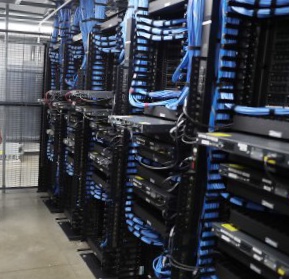Nuclear power stations could be decommissioned with the help of teams of autonomous robots, scientists have suggested.
The robot system is called SMuRF, short for Symbiotic Multi-Robot Fleet. It was designed by engineers from the University of Glasgow, University of Manchester, Bristol Robotics Laboratory and Heriot-Watt University.
The system enables wheeled, four-legged and airborne robots to collaborate and complete tasks that could be difficult or harmful for humans to undertake on their own. For this reason, it was been presented as a safer, faster method of monitoring nuclear facilities.
In addition to their use cases in the nuclear sector, the robots could also be used for the maintenance of engineering infrastructure in challenging environments such as offshore wind power platforms.
“These kinds of autonomous robotic fleets have a great deal of potential to undertake a wide range of dangerous, dirty, dull, distant and dear jobs,” said David Flynn, professor in cyber physical systems (CPSs) at the University of Glasgow and a co-author of the paper.
The system could be ideal for the decomissioning of nuclear plants as it would prevent workers from having to be exposed to possible dangers and side effects from radiation. Instead, the robots could do the exploratory work, while a single human supervisor can remotely observe the process and analyse the data collected by their sensors.
Moreover, the system could also handle many routine inspection and repair tasks in wind power generation facilities. Currently, these tasks are expensive because they often require staff to be helicoptered out to offshore sites – a process that can be hampered by bad weather.
“Having a robot crew permanently on-site to carry out these routine tasks would maximise the potential of all kinds of renewable energy platforms,” Flynn added.
The team demonstrated the capabilities of SMuRF at the Robotics and Artificial Intelligence Collaboration (RAICo) facility in Cumbria. During the demonstration, the SMuRF successfully completed an inspection mission in a simulated radioactive storage facility containing some of the challenges found in real nuclear power decommissioning environments.
The demonstration showcased the robots’ ability to collaborate, which is the result of the CPS, a sophisticated computer system developed by the researchers. The CPS is capable of communicating with up to 1,600 sensors, robots and other digital and physical assets in near to real time.
The data collected and processed by the CPS enables the creation of a 3D digital twin of a real space, which allows SMuRF to navigate around the space and carry out tasks with minimal oversight.
During the demonstration, Boston Dynamics’ Spot fetched tools for closer scans using its flexible arm, while wheeled robots Scout and CARMA mapped radiation levels across the testing environment. CARMA successfully detected a simulated spill of radioactive liquid underneath a waste barrel.
“The robots we programmed and designed in this prototype SMuRF each have their own unique abilities and limitations, as well as their own operating systems,” said Daniel Mitchell of the University of Glasgow’s James Watt School of Engineering and author of the paper.
“During the deployment of SMuRF at RAICo, we were able to show how well the robots can work together and how the digital twin we built can provide remarkable situational awareness for human operators. That could make them ideally suited for the challenges of working in potentially hazardous environments such nuclear inspection and decommissioning.”
Source: E&T










